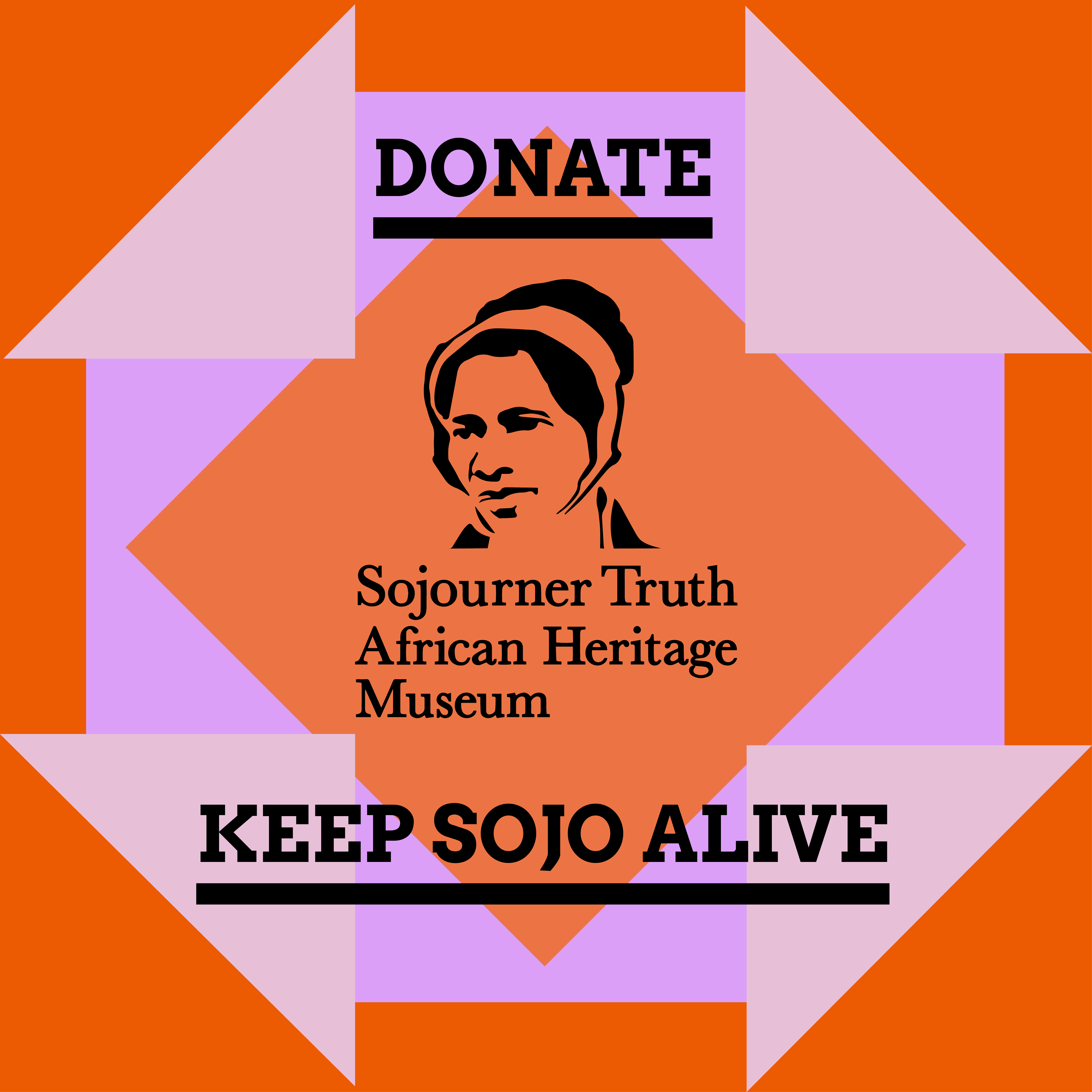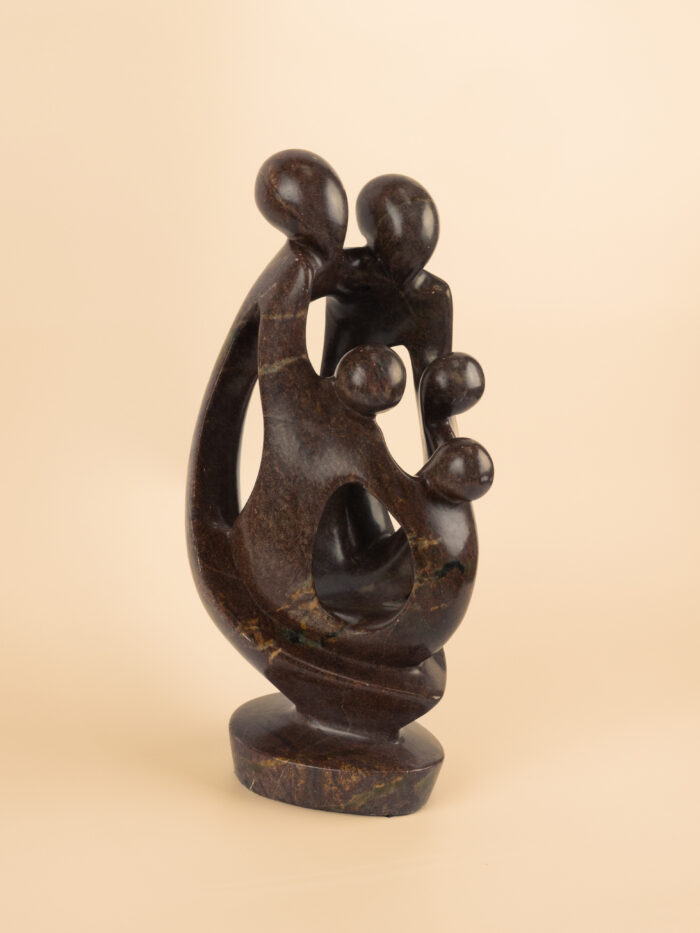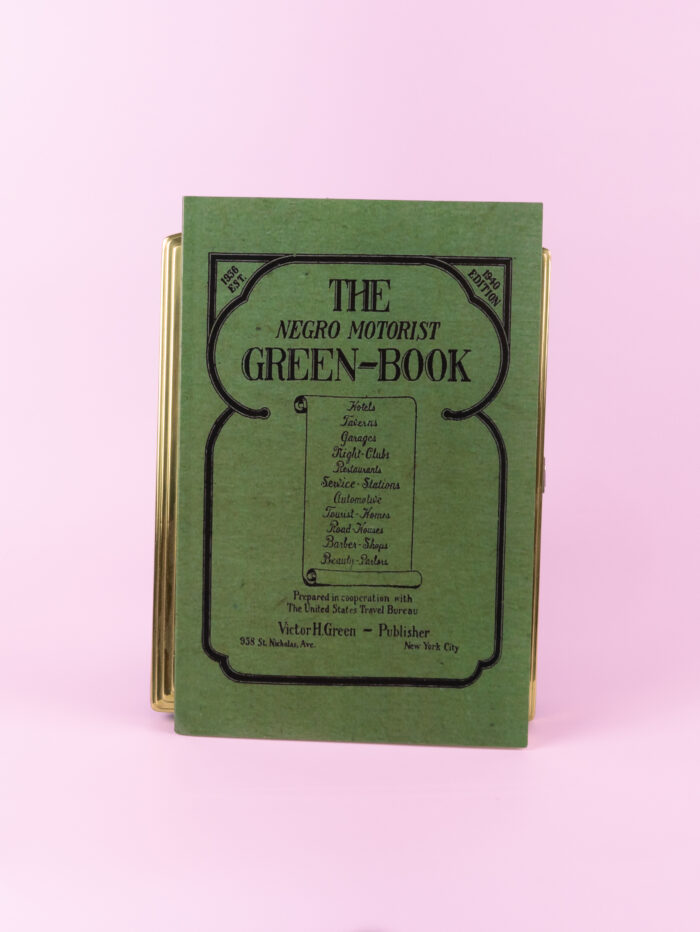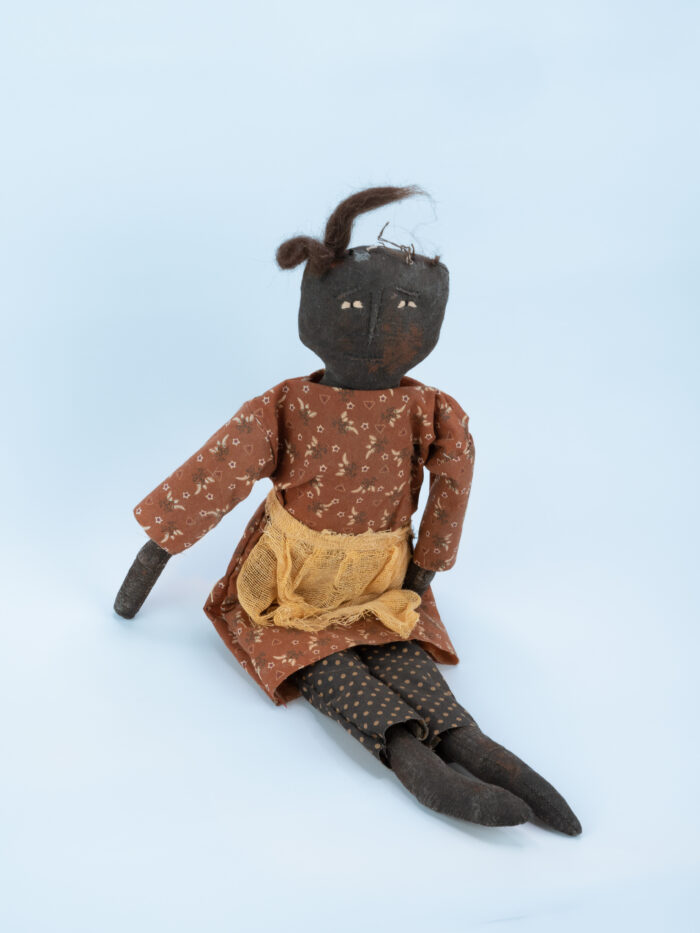
A Seat at the Table
Communing with Shonna McDaniels
Published October 2024
For the past 30 years, Sacramento’s Shonna McDaniels has been a vibrant force in art, education and cultural preservation. Her fascination with the visual arts catalyzed a lifelong journey, making her a revered artist, educator, and community leader.
From a tender age, McDaniels exhibited a keen talent for drawing and painting, rapidly earning recognition as a creative prodigy within her community. Her artwork, noted for its vivid imagery and intricate details, is deeply rooted in African-American history, spirituality, and folklore. She creates art that focuses on the beauty and majesty within Black culture, Black women, and the Black experience to add to and reinforce positive views of Black people worldwide. McDaniels’ striking use of bold colors and strong mixed media compositions provides an immersive visual experience, revealing layers of history and emotion for viewers to explore.
Her fervor for art extends into a robust commitment to community service, integrating art with community organizing and activism. This synergy is evident in her expansive public artworks. The murals and installations she spearheads throughout Sacramento are cultural landmarks involving local youth and artists in their creation. These collaborative processes foster a sense of ownership and connection within the community and underscore McDaniels’ belief in the transformative potential of collective artistic efforts. She has contributed to over 150 murals in Sacramento, Stockton, and San Francisco.
Central to her mission to preserve cultural heritage is the Sojourner Truth African Heritage Museum, founded by McDaniels in South Sacramento in 1996. The museum celebrates and safeguards African and African American culture through educational programs, workshops, and exhibitions. Much of the information displayed in the museum is presented through unique art installations assembled by McDaniels and other collaborating artists. Her work with the museum underscores how her practice uses art as a potent tool for community gathering and empowerment.
McDaniels’ accomplishments have garnered widespread praise and recognition. In 2021, the Sacramento Kings honored her as the city’s premier “Culture Creator,” and in 2022, the Sacramento Observer selected her as “Person of the Year.” These accolades affirm her status as a trailblazer in cultural education and her significant contributions to the arts and community.
Shonna McDaniels continues to be a dynamic and influential figure, blending personal and cultural expression with community activism. Her compelling visual narratives, educational initiatives, and unwavering commitment to cultural preservation significantly enhance American art and culture. Her enduring legacy demonstrates the profound capacity of art to facilitate dialogue, educate, and unite communities, highlighting her role as a pivotal figure in bridging divides and fostering unification through artistic endeavors.
— Unity Lewis

My work speaks to the upliftment and the spirit of the Black Woman.
I draw on my experiences as a Black woman coming from a single-parent home. My mother is one of the strongest women that I have ever met, raising four children alone because my father spent most of my younger life in prison.
He went to prison when I was four years old, one of the many members of the Black Panther movement incarcerated for crimes they did not commit. They said he was the mastermind of a bank robbery. He has done some things in his life that were not good, but masterminding that bank robbery, I do not think so. I remember when they came and got him; I was four years old, but I remember vividly that he was not wearing shoes or a shirt, just pants. I was angry when they marched him out of the house like that—you know how they handle Black men. I do not know where I learned the term, but I yelled, “You pigs, leave my dad alone!” I kept screaming it; I remember that vividly.
Then, watching my mother navigate this world as a single parent, putting a hot meal on the table for us every day with just a little bit of money, it was amazing how she made something out of nothing. She went out there every day and worked. I remember her not having a car to get to work; she would walk, leaving at five o’clock in the morning. When I say walk to work, we lived off Amherst, and she would walk from there down to her job, which was past Southgate. When she got off, she’d walk back and continue to do this until she could get a car. I remember these struggles. She was determined and never gave up; she gave us all the love and nourishment we needed.
And even though my father was in prison, he wrote letters to us all the time. Those letters meant everything to me, and I still have them today. Those moments gave me the strength and character I needed to become a strong Black woman. That’s what I depict in my work. My mother’s mother was incredible as well. Seeing all these women of strength in my lifetime, I capture that in my art.
I remember being six, seven, and eight years old when I spent countless hours with her quilting in the garage. Because I remember those opportunities with my grandmother; we started a senior and youth quilting program at the museum.
I also remember my grandmother teaching me how to make flour tortillas, pie crust, and biscuits from scratch. Even though it was easy to go to the store and buy canned biscuits, I usually made them from scratch. That’s what my grandmother taught me, so I implemented a program here at the museum where seniors teach young people how to make things from scratch. Those are traditional things that children today don’t have the opportunity to learn.

Black Panthers
My mother was involved with the Black Panther movement in the late ‘60s. Though many people perceive negative energy when the movement is mentioned, the Black Panther movement was for the upliftment of Black people—uplifting people within their racial group is not negative. Everybody needs inspiration. For example, many Mexican youth come to the museum and say, “I don’t know anything about my culture.” That’s when I call my Mexican artist friends and say I have a group of Mexican youth who want uplifting. They want to know who they are. They should know. There’s nothing negative about that. The Black Panthers did a lot of good work, feeding thousands and thousands of kids. There is nothing negative about that.
My mother took us to marches in Oakland and here in Sacramento, and I was happy to be able to have those experiences as a young child. She enrolled us in programs to help us have the love for who we were as young Black children. We went to a school in Sacramento called Shule Jumamose, where I celebrated my first Kwanzaa. I also learned Swahili there, though I don’t remember it. These programs help us become enriched in who we are as African people.
We’re not Black people or any other term used. We are African people who have had experiences here in America. Our ancestors were brought here, but we are African people. Our traditionally vibrant culture was stripped away; our language and culture of playing drums were taken from us. We couldn’t beat the drum for fear of being killed. The Black Panther Movement reconnected us to our culture and history.

So, as a young Black girl, these experiences helped cultivate me and gave me strength and guidance. If I didn’t get that, I don’t know where I would be today because most youths don’t survive coming from a single-parent home; they become a statistic. However, my siblings and I have accomplished many great things because of the experiences that we had in our childhood.
There were many art groups in the movement. The Kool-Aid Group and the Spiral Group were a couple. One of the exhibits we have at the museum is called “The Soul of a Nation,” and it documents those groups. There were many different art groups.
Sacramento Black Arts Collectives 80s to 90s
I became personally attached to an art group much later in life when I became a professional artist. I connected with John King, who participated in the birth of the Sacramento Metropolitan Arts Commission, and with Bob Burge, Alex Miller, Allen Gordon, and Don Price, who formed the Black Affair Gallery.
I was part of an art collective called the Visual Arts Development Center with Alpha Bruton and Talver Germany. When I met John, we had a studio space in the African American Artist Group across the street from Gunther’s Ice Cream. The African American Artist Group was an artist’s collective space and studio that housed the first Black gallery, the Zawadi Gallery, owned by artist Kevin Hellon.
That was in the late eighties, and being a part of that experience was what I imagine it must have felt like for Black artists in the Harlem Renaissance movement. Being with that collective was a very empowering moment in my life.
It wasn’t just visual artists; it included performing arts organizations like Celebration Arts, Zawadi Gallery, Les Beaux Arts Club, and the Visual Arts Development Center, which were a part of that collective. We used to have an African American art summit in the Bay Area. We also held The Art of Soul Festival, which used to happen at the Radisson Hotel. We did that for three years: 1990, 1991, and 1992.
In the Beginning
Akinsanya Kambon (AKA Mark Teemer) is a ceramic artist who has shown at the Crocker and was a mentor to me. When I was young, he and my dad were good friends, and they filled our home with his artwork. So that was another thing: my environment was culturally stimulating, and that’s how my home is today. My mom and dad had African masks, African-inspired textile fabric, pillows, and cushions everywhere. It was like walking into Africa. When I walked into my home, all I’d see were paintings by these amazing Black artists.
I knew, there and then, that’s what I wanted to do. When Akinsanya would come over, I’d grab my art and say, “Let’s do this.” He’d say, “Come on baby, come over here…” and we would sketch at the table. He has been my mentor since I was a little girl. I would tell him I wanted to be an artist because I’d looked at his amazing artwork. I still have one of those pieces in my home. They’re all pencil sketches, but his subjects inspired me. He painted a variety of different types of work depicting women and children.
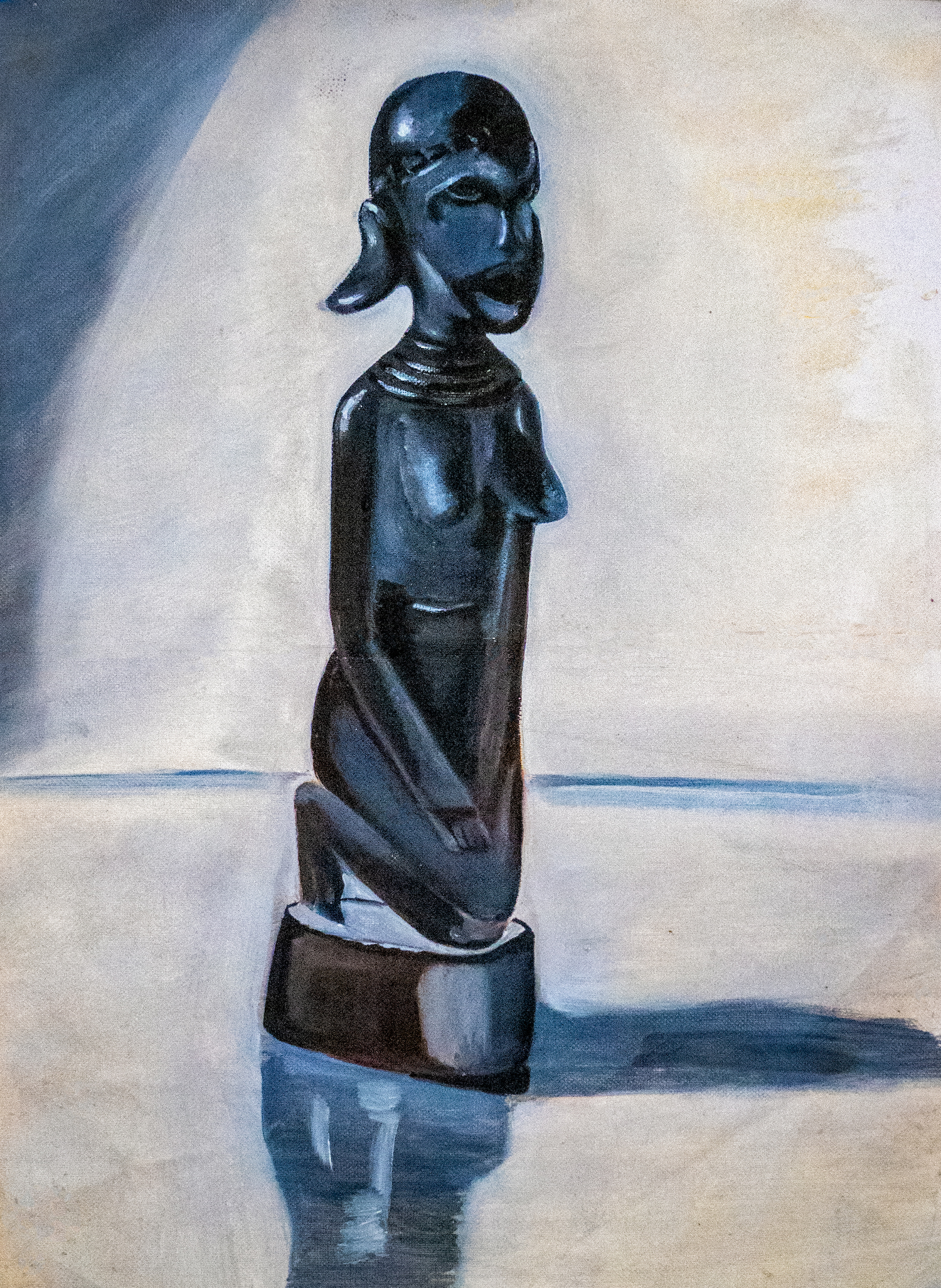
I wanted to be an artist just like him and create pencil studies. I wanted to work with acrylic and all kinds of paints. Many of my original pieces were pencil studies, and I evolved from doing pencil studies to working in acrylic and oil paints at Kennedy High School. After my introduction to oil paints, that was it; I put the pencil down and mainly put the acrylic paint down as well. I just stayed with oil paints, which weren’t good for my skin. I would break out a lot, and I wasn’t covering my face correctly, so I dealt with a lot of acne. Over the years, I’ve learned how to correctly monitor my work with oils, and I’m not just working in oils anymore. I also do a lot of collage work and use a pencil, so I do a mixture of work.
I tell everybody I came out of my mom’s womb with a paintbrush. I was one year old, and I was always doodling and drawing. My mom saw that in me and helped cultivate that interest. She kept me involved in anything artsy. She ensured I was there, whether at school, in programs in the community, or in art contests; she put me in all the art contests.
I watched the Bob Ross show, “The Joy of Painting”, daily. I’d have Bob Ross on TV on channel six. That’s what I watched every day; she knew I loved that program. She would set me up with my paintbrush and canvas, and I would sit there. Bob did something in a matter of minutes. I did the same thing, using a palette knife and creating the trees and then taking a card and making the line go down to indicate the trunk of the tree and then taking a brush and smearing it to create the image of water, and in five minutes I would be done with a painting, just like that.
It blew me away to see how fast he could create a painting. I copied everything back within minutes, so by the time Bob completed his painting, I had finished my painting, too. So yeah, she encouraged me to do all those things.

She took me to museums, art shows, and festivals where artists displayed their work. We went to festivals here in Sacramento and in the Bay Area. I just loved art. She helped stimulate my interests, which is another thing that parents need to do. I tell parents that if they see something unique about their child, they should help cultivate it. Sadly, today, a lot of parents don’t do that.
It was a natural transition because I started sketching faces simultaneously. I remember getting tons of magazines and drawing at the kitchen table. The tipping point came when I got to high school. In junior high school, our teachers were cool, but we mainly did abstract and perspective work. When I got to high school, a teacher at Kennedy High, Mr. Williams, noticed me sketching faces. He did two things: he gave me charcoal, and he gave me oil paint. Until that moment, I had never known what any of those things were. He gave me canvases, saying, “I want you to do your faces with charcoal and oil.” That was life-changing for me, especially the oil paints. I was like, “Wow, what is this? I can blend skin tones!” I was immediately in love with oil paint and being able to capture skin tones. I still have all my paintings from when I was in his class; I also sketched charcoal studies in color and black.
That was when I knew I wanted to focus on portraits for the rest of my life. I started to use more and more oils. I couldn’t get enough of them, and I would have my mom purchase little kits so I could paint at home. If I had never met Mr. Williams at Kennedy High School, my life probably would’ve gone in another direction. That was it. That was my defining moment in becoming an artist.
Even though he was a white teacher, he saw that my focus was on painting chocolate skin tones. He encouraged that, and with his guidance and a lot of practice, I began to perfect the art of blending. Then, I went to City College and Consumes College. After that, I went to Sac State for a year, and then another mentor came into my life who was Native American. He was an artist, James Spurlock.
I’m not sure where I met him; I may have seen his artwork somewhere, but I heard he was teaching and asked him to provide me with lessons at my studio across from Gunther’s Ice Cream. So, he would come and give me lessons, even though I was in college; I would pay him to come in because his skin tones were so smooth. His focus was painting Native American women, and I did around a year of instruction under him. Having him work with me one-on-one taught me much more than in any college.
I’m still taking art classes at Consumnes. My favorite instructor is the ceramic artist Yoshi Taylor. One of the things that I love to do is work with ceramics, but I need more time to do that. I’m bringing that to the forefront, working with ceramics and making sculptures of heads and shoulders. I’ve done a few, especially in Yoshi’s class. I purchased some throw wheels for my daughter and me so we could spin the wheel and make bowls at home.
Before transitioning from this earth, I want to create life-size sculpture pieces; that’s my main goal.

Community
My art has always related to my experiences as a Black woman, mother, and artist. There’s a lot of trauma in the Black community. Whether people believe it or not, it’s related to the traumatic experiences of enslaved Africans.
Even after being freed of their physical chains, enslaved Africans were still traumatized. Can you imagine, after going through hundreds of years of endurance that our ancestors had to go through, and then one day you’re told, “Okay, you’re free to walk away,” and you didn’t receive any help for mental illness or any support for what you went through for all those years. That trauma gets passed on from one generation to the next.
Sometimes, I have difficulty understanding why people don’t understand that. When going through trauma, you need some healing mechanism, whether holistically or spiritually, whatever the case. You can’t just say, “Get over it.” There needs to be mechanisms set up to help, and that was never done to help the enslaved Africans. So, there’s a lot of that trauma today in our communities related to that. And I wish our society would take the time to care.
Why do human beings have this bias and this racism that they can’t overcome? Why can’t we talk to each other about racism? That must be the first thing on the agenda.
It will take everybody to participate in the conversation to bring about a change. A white psychiatrist, Jane Elliot, created the “Blue Eyes/Brown Eyes” exercise as the basis of what is now called diversity training. She said, “white people need to start speaking up. You must stand up because if you’re not a part of the solution, you’re a part of the problem.”

I remember participating in a group about ten years ago in Sacramento, and that’s what we did. All groups were at the table—White people, Mexican people, Asian people, Black people—and we talked about race and racism. Initially, all the groups came together to have a conversation about the intentions of this initiative. Then, the White people talked amongst themselves; the Black people talked amongst themselves; the Asians spoke amongst themselves, and so on. We all talked about race as it relates to our group and other groups, and then there was a series of workshops; after that, everybody came together.
But it was just a one-year initiative. Something like that needs to happen again regularly and over a meal. I’ve talked about having conversations about race over food because people love to come together when there’s food.
We’re human beings. We don’t have more power or strength than the almighty divine power. We may think we do, but we don’t. Okay? Continuing this way can’t happen; there must, at some point, be an intervention.

That could happen if people took the time to understand each other’s cultures and have an honest conversation about reparations for African Americans. In a recent UC Berkeley poll of California Voters, only 23% of Californians believe that African Americans should receive cash reparations. The poll included a cross-section of Californians, including Latino, African American, Asian, and White.
African Americans started the civil rights movement and fought for all people of color to reap those rewards in America today. Why wouldn’t they want African Americans to have what they deserve?
People need to come to the table and consider the struggle of African Americans in America and the things that African Americans have built here in America from which everybody benefits. Community conversations will allow everybody to come together and reach some understanding, peace, and unity.
We got a late start. We need opportunities to catch up and be at the table. Education, housing, health—all those things are part of it.

Building Community
I called artists I’ve known for years and said, I have this project; come and work with me. And bam, here we go. I work with 12 local community Black and Brown artists on this project: Henry “Fisko” Fisk, Teresa Gutierrez, Unity Lewis, Judah Pimental, Jose Lott, Mia Davis, Malik Seneferu, Markos Egure, Lee McCormick, Taylor Pannell, and Urban Sunshine.
It was an opportunity for many of our artists to be involved in a public project. I’ve known many of these artists for years, like Jose Lott, who created the community center mural at Oak Park; he and I go back over 30 years.
There are a few other artists, mainly Black and Brown artists. I’ve known their struggles, and I said, if I ever get an opportunity, I’m not going to take them through a rigorous application process. And that’s what I did with this project.
This process is purposeful because, in this community, there’s a considerable division among people of color; there are many Mexican, Chinese, and East Indian-owned businesses, among others. Initially, as a Black woman approaching these business owners and trying to tell them what the project would be about, I was getting a lot of resistance, like, “Who is this Black woman coming to talk to me? No, get out of here.” That hurt my heart. Come on now, “I’m here talking to you about bringing a project to help clean up and beautify our community.” This beautification project should have been something that people embraced with open arms, but it was different.
For example, to create the mural behind us at Quality Tune-Up, I had to get one of the Mexican artists to talk with them. It’s a Mexican-owned business, and I had been going for months and months to speak to them about painting this beautiful mural celebrating Mexican culture and heritage. I was getting resistance; they kept shooing me off. And then I called Jose Lott and said, “Brother, I need you to go over there and talk with your people.” This is a mural that’s going to celebrate their community. And he went over there, talked to them, came back, and said, “Okay, it’s done”. Just that fast!
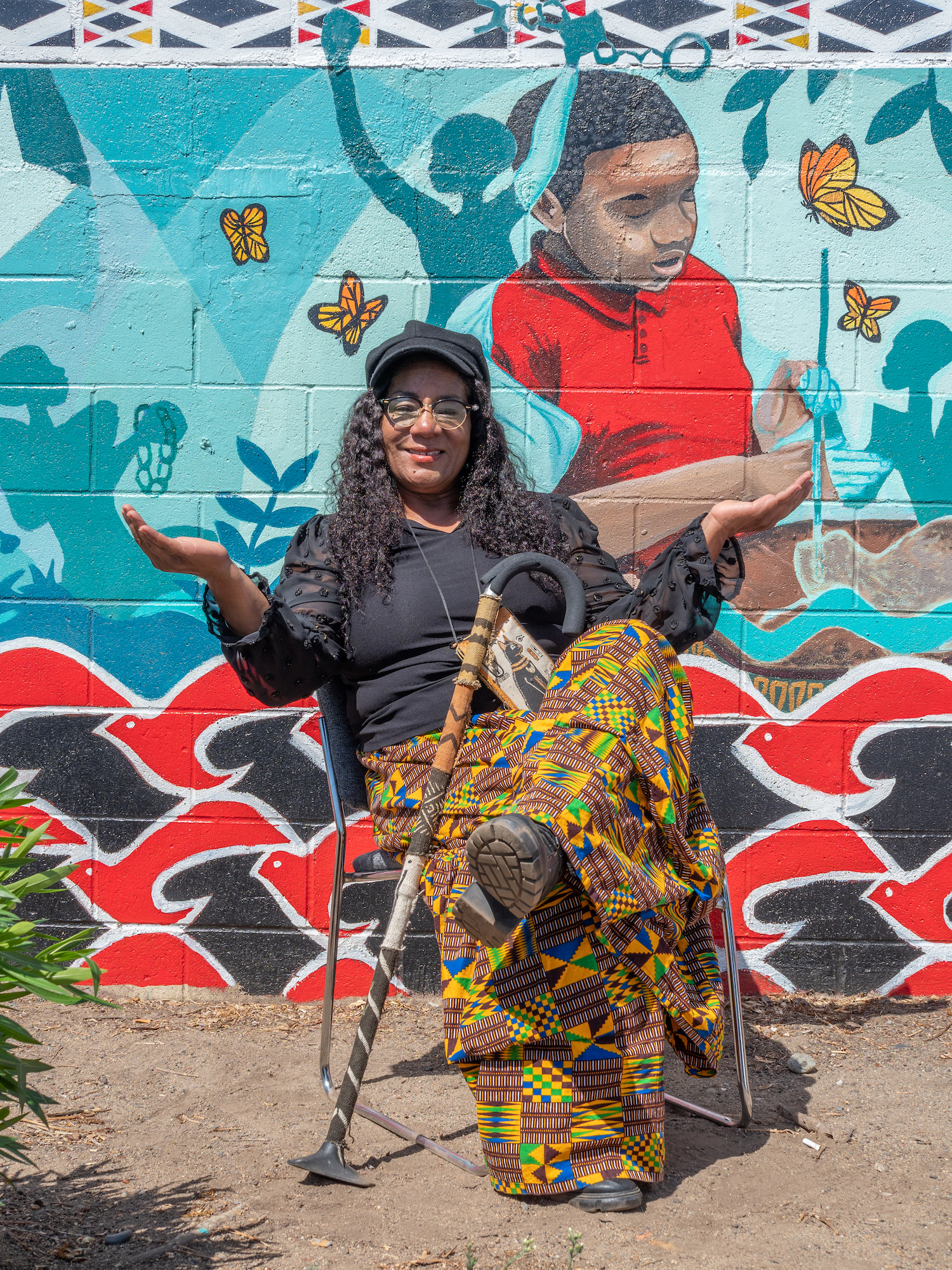
That’s what I’m talking about. We need to check ourselves and deal with each other more humanely. Stop looking at the color of one’s skin when we’re trying to accomplish things in our community. It’s a hindrance, but that’s what we deal with, and so, once again, until we can all get past that, I wonder if that will ever change in our community.
We’re trying to clean up our community, clean up the litter, and talk to neighbors about dumping in our community. But on this level, you can’t even have a conversation with me because all you see is the color of my skin. In contrast, we have a more critical issue here and should be working together to keep our community and air clean so that we can survive and hopefully live a life of longevity and happiness.
It’s a continuous issue that I deal with as a Black woman. I’ve been a leader in this community and have worked extremely hard for over 30 years. I should be able to go to all these fellow business owners and say, “Hey, I’m trying to impact this community for all of us so we can see beautiful things happen.”
All they can see is the color of my skin. They don’t even want to talk to me. It’s heartbreaking.
From the Inside Out
There’s a lot of trafficking in our community; that’s a big issue. I worry about that not just for my daughter or nieces but also for any woman. We want women, regardless of race, to be safe against predators, and that takes education.
Growing up, my mother had many conversations with me about safety. She would tell me, “If you’re walking down the street, and you see a grown man walking towards you, cross over.” She said, “Always walk facing traffic; never walk with your back to traffic because that makes it easy for someone to pull up and snatch you in.” These are the tips that my mother shared with me. These are old-school tips, but today’s young ladies need to get that information.
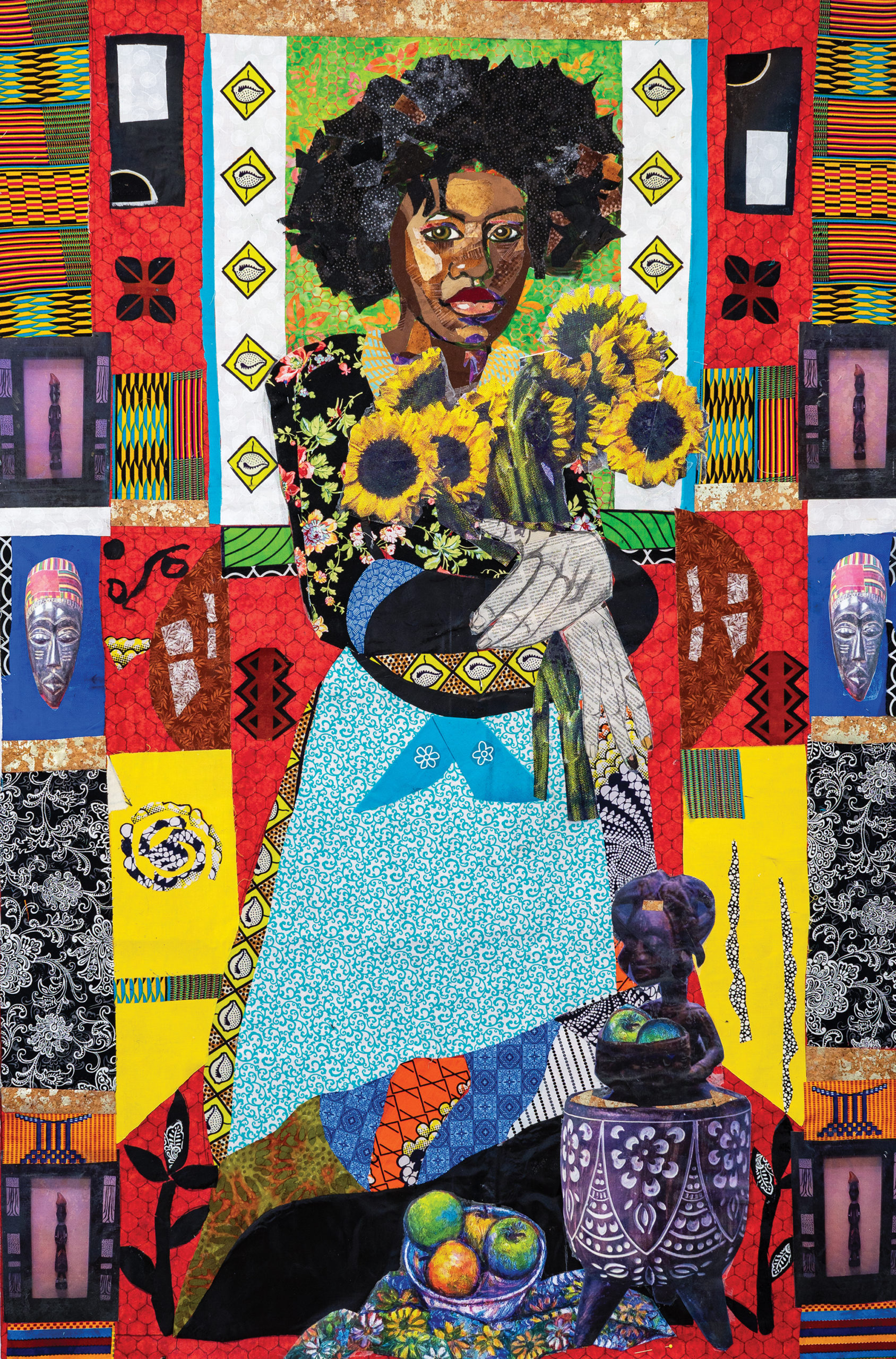
Another critical factor is that young Black girls must be made to feel good about themselves and have good self-esteem so they’re not so easily influenced. As my mother explained to me as a young Black girl: Feel good in your skin and love yourself. What does love yourself consist of? Health and wellness, from the inside out.
Mind you, some Black girls don’t have parents. Maybe they’re coming up in the foster system, so we need mentors out there to share this information because not having a mother there to provide them with this guidance is also detrimental. A young lady also needs this energy from her father, too. She needs to feel loved, and like she can go out and conquer the world.
There are babies having babies, fourteen and fifteen-year-old girls having babies. Back in the day, grandmothers were in their early 60s or 70s. I just met someone; she’s a 35-year-old grandmother! So yeah, it comes down to a breakdown in the household. And there are other issues: the father’s not at home, the mother’s not at home, or you have parents at home, but psychologically, they’re not fit to be parents.
There are so many dynamics: alcoholism, drugs, or they’re working two or three jobs, and then they’re not giving the child the attention that they need. There are just layers and layers of issues. Maybe they live in a single-parent household or maybe in poverty. You have that compounded with an overload of information from social media. It’s just layers and layers. I feel for the youth today. But I tell them, whether they’re listening or not, that they must decide to put themselves in a holistic state of being.
Spiritual guidance is the foundation, and many have gotten away from that. Every human needs a spiritual foundation that will put you in the mindset to tackle many of the issues you’re dealing with and provide you with some armor. I tell my nieces, nephews, and youth to seek spiritual enlightenment, practice meditation, and incorporate holistic eating if possible because many foods trigger things that might not be good for you. It comes down to greed and capitalism—just putting anything in food to make a dollar bill—and human beings consume this food.
But one of the things I realized I had to do was set an example. I had to start with me. I can’t just talk to the youth about eating holistically and all those things. I had to stand up and be an example. So, for the past four or five months, I’ve been eating vegetables and fruit and eliminating all processed foods and dairy; it’s a lot of work. But it’s being noticed, especially with the lifestyle change, that I hear comments from the youth, “Okay, she is doing it!”.

Nation of Islam
I tell people that the Nation of Islam saved us, and just like the Black Panther movement, people tend to think negatively of the Nation, but there’s no negativity around what they did for the community. Both movements were trying to awaken the culture and reclaim what was lost. We call that “Sankofa,” which expresses the importance of returning to knowledge gained in the past and bringing it into the present to make positive progress. In the hallway outside the museum are murals; we have the Sankofa and the birds with the egg. That’s symbolic of the fact that one must look back and reflect on what was lost and reclaim it.
Both the Nation of Islam and Black Panthers were about the upliftment of African people trying to reclaim what was lost. And that doesn’t take away from your love for other human beings. It’s just helping people reclaim that which was lost. One of the things that the Nation pointed out was that if you only had Black people in this world and no other race, there would still be problems. Right? And, if you only had White people on the face of the earth and no other people, there would still be problems. We all need to work on who we are individually and collectively to heal our mental, spiritual, and physical being. Then, we can better associate with other groups more effectively.
When we talk about black-on-black crime, I tell the youth that if they were aware of who they were and had self-love, if they knew that there was greatness in their historical past, great African kings and queens, if they understood this and were empowered, they wouldn’t be out here trying to hurt another human being. Because if you love yourself, you will love the people in your space. And that’s all the Nation was teaching.
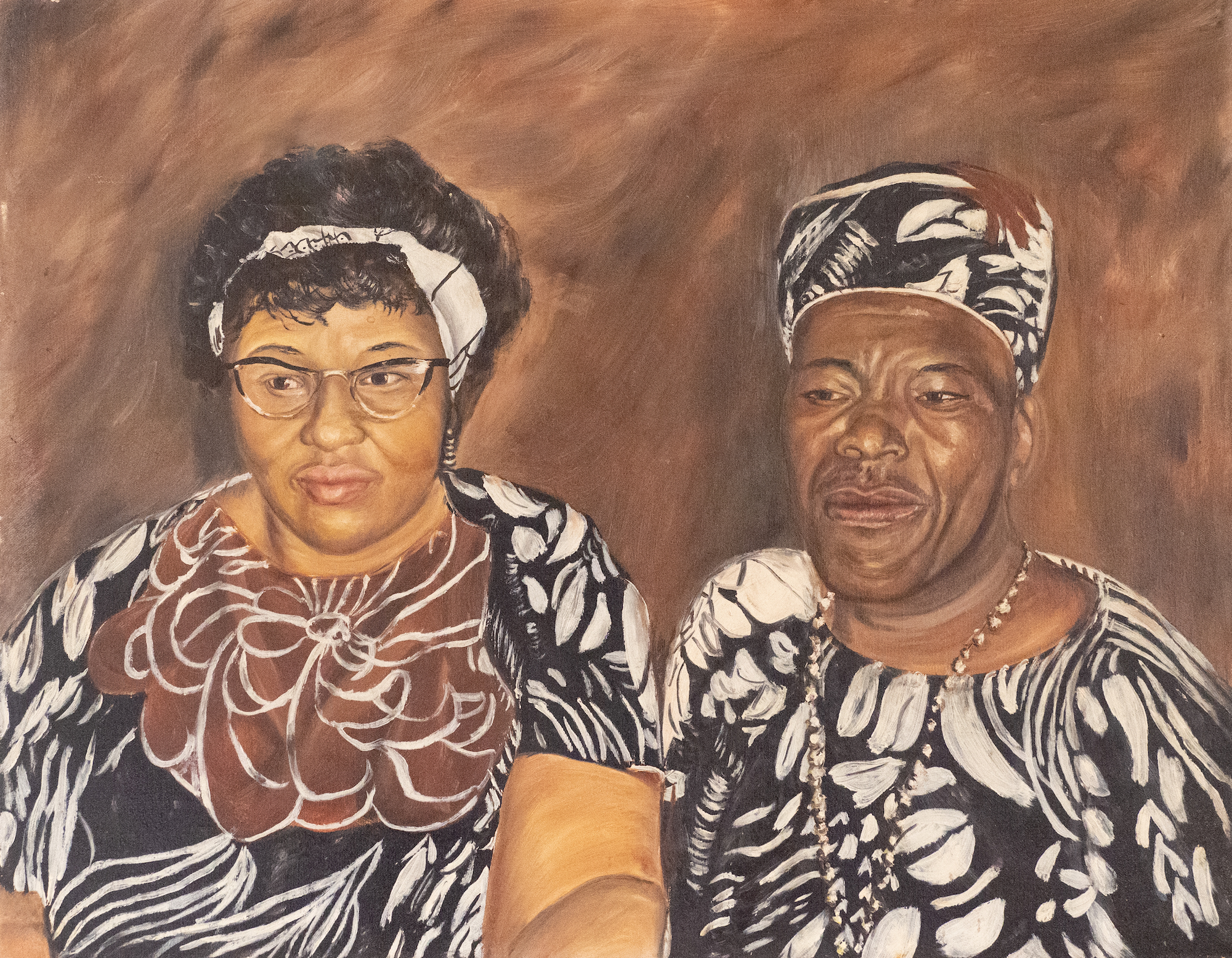
I was about eight or nine when my mother joined the nation, and I tell people how much they helped our family, especially my brothers because they joined the Fruit of Islam group, where they would march and learn self-discipline to strengthen them as young Black men. They needed that because my father wasn’t at home. There were strong male mentors in the Nation to help them become empowered; if we didn’t participate in those programs, we’d probably be a statistic, especially my brothers.
At that time, the Nation was sharing information on how to eat and live holistically, so I’ve known how to eat to live a healthy, holistic lifestyle since I was a young lady. Still, it didn’t make sense until I learned about Dr. Bobby Price and Yahki. They share information about what each food group does to each vital part of your body.
Recently, after all these years, it just clicked. That experience of being in the Nation, learning about eating healthy, staying away from pork, staying away from alcohol, staying away from drugs—all those things were a part of the teachings—was another defining moment for me. The Nation helped me understand self-sufficiency, self-reliance as a Black woman, and business practices. Remember, the Nation of Islam encompassed an entire block in Oak Park then. It was like a Black Wall Street with a block of Black-owned businesses. They had Shabazz Fish and Chips, a meat market, a grocery store, and an apparel shop. After Sunday services, I’d walk the entire strip, looking at all these Black-owned businesses, and became further empowered.
Shabazz Fish and Chips was one of the top restaurants back then—everybody would go to Shabazz because they had the best fish and chips you have ever tasted. And they had another non-meat item, like a salmon fish burger. I’ve never experienced anything like it ever since I was a kid. When I realized people would come from everywhere to get that fish burger and to experience that community, I knew I wanted to have my own business. It helped me and my brothers to be self-reliant—one of the main things I learned in the Nation.
This realization is why I’ve implemented all these things, like the Youth Entrepreneur Program, where I teach the youth to be in business for themselves and help them develop business plans. We just held Youth Entrepreneur Day. All the kids involved made over $250 each with their businesses.
Guiding Principles
Well, my thing has always been, and again, it comes from my mom’s teachings, that if there’s something that I want, no matter how badly, I pause and recall her words, “All money is not good money; never compromise, and never give up.”
Activism and creative expression are very important and a part of my soul, so I’m not going to be the one to disrespect myself and who I am as a woman, as a Black woman, as a human being for anything material, never, because I believe that what you give out into the universe is going to come back to you negatively or positively. Because I live by those guidelines, everything I put out positively always comes back to me. It always works, like karma; if one door closes, another will open.
Some people might not even recognize it, but I always know when it’s coming back to me. If I pass up a good opportunity because it’s not right for me, I am open to finding an even better opportunity. It’s the way I’ve always lived my life. I instill that in the youth and my children. Live your life purposely. Live your life with decency and respect. Don’t compromise for material things; the universe and the ancestors will see you’re cared for, which leads to success.
I think about the monks who create these intricate mandalas out of sand; they spend all this time and energy building them and then let the wind blow them away. The lesson is not to tie yourself to anything material in this world, and I live by that.
Everyone Deserves A Roof
We’re building these 10-foot metal art chairs at bus stops on Florin Road, and people have been asking, “What are you going to do when the homeless come and make a camp underneath those chairs?”
I say, “Why are you asking me? You need to go and talk to the city; with all the vacant buildings in Sacramento, ask them why they’re not opening them to give these people a space to live?” Where are they going to go? Are they aliens on this earth? If you don’t want them over here, and you don’t want them over there, and the city’s not making a space for them, where can they go?
These are not people from another planet. They are human beings with us on this planet; we’re in this together. Why immediately go to a worst-case scenario? For example, before we painted murals around SOJO’s parking lot, the space along the walls had become a homeless encampment. I can tell you that while the artists painted, the homeless would say, “We’re not going to mess this up. The murals are beautiful. We love this!”
They have compassion and respect for the creative experience. It’s the difference between night and day. There once were tons of homeless people camping against the wall over there; now, there are none. This art we bring into our community creates the impact and change we want.
The city and state have many vacant spaces and buildings, and there are even some privately owned spaces. I also put this on private owners—Sacramento has many empty buildings. Some have been sitting for 10, 15, and 20 years. It’s shameful that you would have all these spaces sitting for this length of time and not open them up to impact change in our community and provide housing incentives for all people.
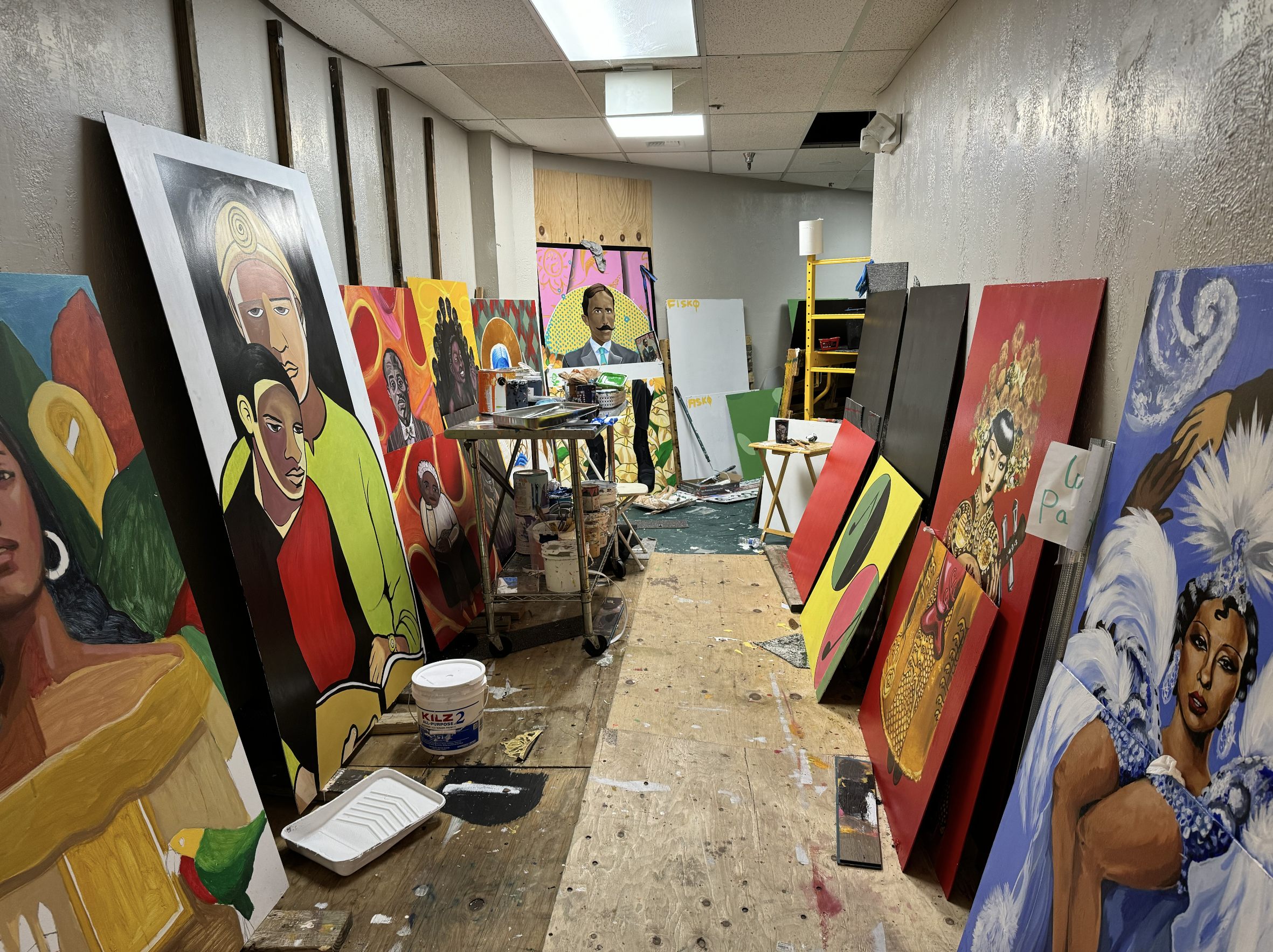
I worked for the West Florin Payee Service for 18 years, managing SSI (Supplemental Security Income) and SSA (Social Security Administration), working closely with the unhoused community. Because I helped manage their money, I know that most of the unsheltered people you see have some income. As a West Florin Road Service representative, I mainly represented them for assistance in receiving SSI, Veteran, and Native American checks.
The way I look at it, I place people experiencing homelessness in three categories. Some have a mental illness and shouldn’t be on the street, but again, the powers that be, because of greed, decided they want to save money. That is one of the worst mistakes they could ever have made; some people have a mental illness and need to be in a safe space for their protection and the protection of others. It’s not about their rights or anything like that because honoring their rights would give them a safe place to be so they wouldn’t be a danger to themselves or others.
The next category includes those individuals who do have money, but they probably want to use it for drugs and alcohol, as opposed to using it for housing for themselves; but that’s a mental illness, too. They probably need support to help them with their mental illness and overcome their dependence on drugs and alcohol.
The third kind of homeless person is the individual who ended up on the street because of high rent, loss of income, or several other financial reasons. You need three or four times your monthly income to get another place. Imagine making $1,000 a month and needing three or four times that to get into a home. That’s something we dealt with when I worked at the payee service; we tried to provide referrals for what is known as room rentals. Many people connected with the payee services had six-bedroom houses, and they would rent out the rooms.
Initially, they were charging anywhere between $400 to $500 just for a room, leaving the client with some money for personal things and some food. But now the prices have gone up for room rentals, charging between $700 to 800 for a room, not leaving the clients any money for food and necessities. A few offer a light breakfast, lunch, and maybe dinner. But that is a problem because you have six people living in the home, and all these people are just grabbing food, and the food runs out —so there’s just a lot of dynamics.
Those are the categories of people you have living out on the street. And all those categories could be addressed if there wasn’t so much greed in our world. If human beings cared about each other and the powers that be took the time to address each one of those issues respectfully.

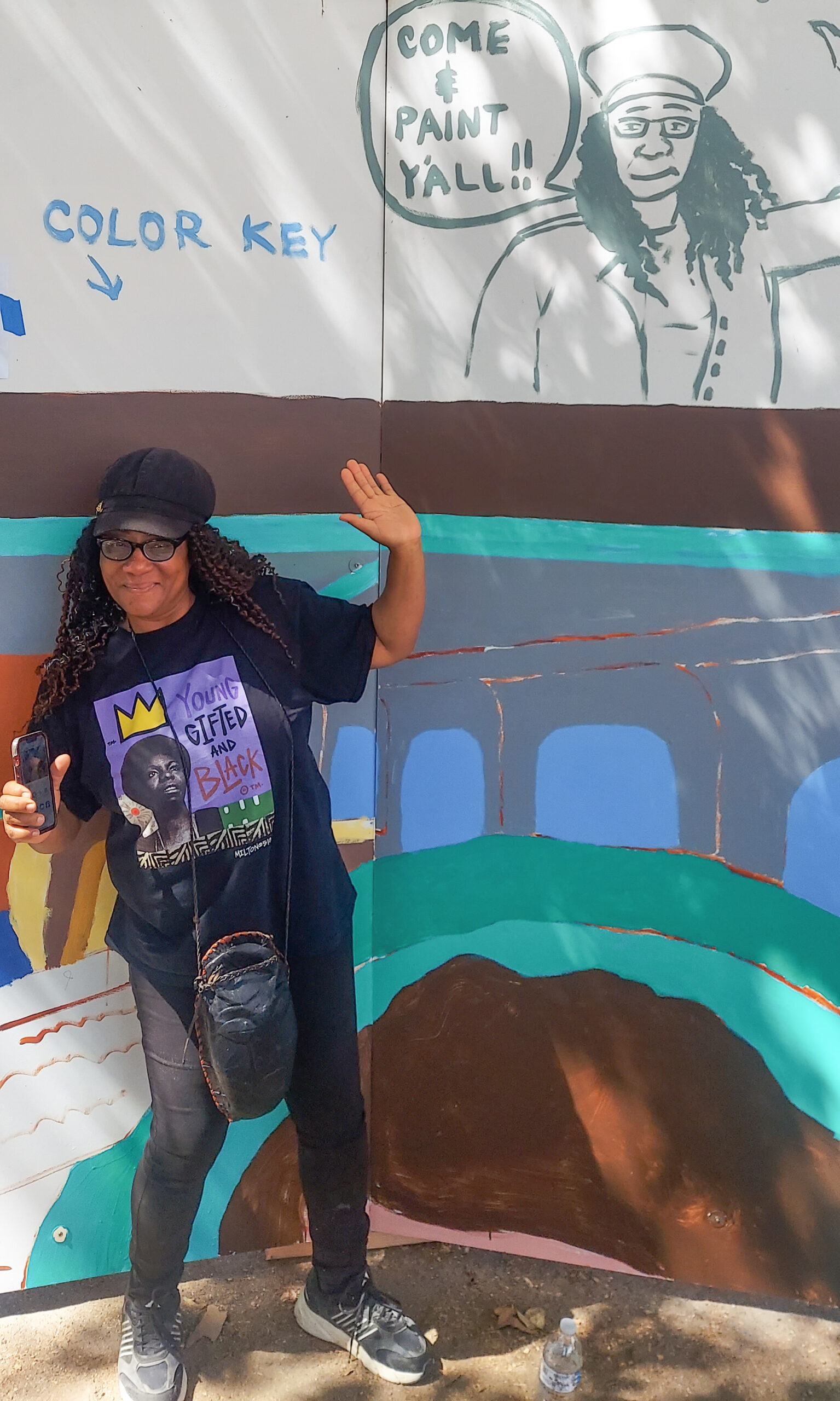
Collective Work
It’s the artist’s responsibility to work collectively, be a voice for change in our community, and speak up about public art that may not be healthy for our community. I’ve been fighting for public art in this community for years because the downtown area has become saturated. Communities like South Sacramento should be just as important and have public art that’s meaningful and influential; I’m talking about art that’s uplifting and beneficial.
Artists need to speak up. That’s why I made it my life’s mission to speak up and why I’ve received these grants to bring art to South Sacramento.
It’s a collective initiative; 12 Black and Brown artists are working collectively to create art that speaks to culture and history. It’s our responsibility to do that. It’s our responsibility to create art that’s for change, if need be, just like the artists in the Spiral Collective. That’s our responsibility, too. When I say speaking up, I’m not just talking about visual art; we must be responsible enough to speak up when art is not empowering, including the performing arts and the music industry.
Let me break it down. When discussing visual art, I’m referring to artists who create murals that represent historical individuals without providing context in the mural. For instance, Wide Open Walls had a mural festival celebrating Rosa Parks, with over 30 muralists participating. But there’s no history shared in the art. The festival was to honor Rosa Parks, so the subject matter is essential.
In contrast, our mural out here is about Aaron Douglas. When people see that mural, they’re learning about Aaron Douglas. We included inspirational images and writings of his work. We’re providing enough information to inspire someone to research Aaron Douglas.
Milton Bowen says art shouldn’t be for decorative purposes but for education. Painting something for public view should be educational and have a storyline, especially for the youth.
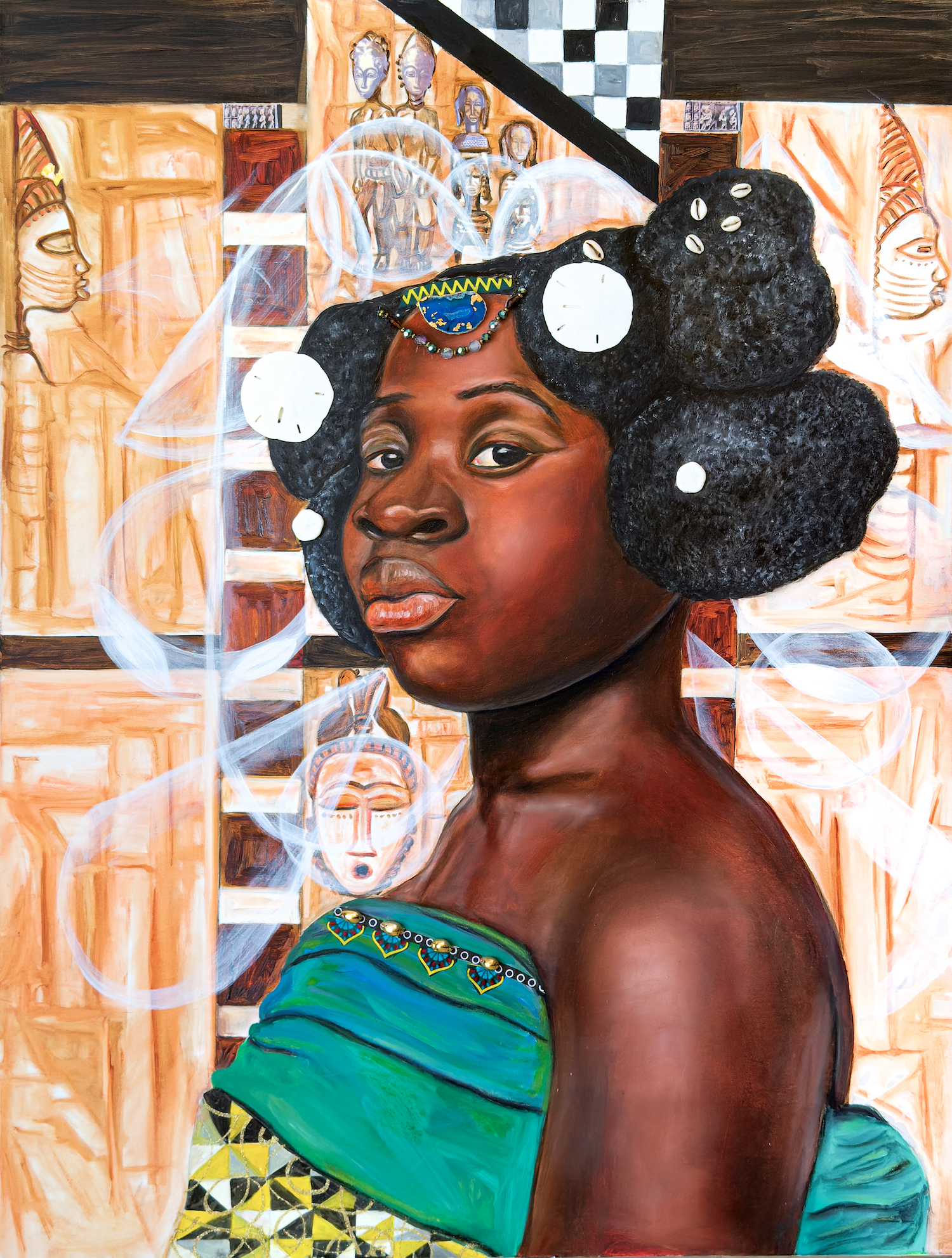
Change is slow
Throughout my years as a Black woman artist, I’ve experienced a lot of racism. I was with a group, and we would travel to the Auburn and Placerville areas to paint holiday murals on storefronts. We had a contract with Lucky Grocery Stores. It was a group of Black women contracted to paint windows for holidays like Christmas. White folks would stop and see three or four of us painting, and they’re like, “I know you all are not going to paint a Black Santa Claus on these windows.” And stuff like that. “You don’t have to worry about that; we’ll paint a White Santa Claus with rosy cheeks.” That’s what we’d tell them.
There are two issues with that; first, you think we can’t paint a White Santa Claus because we’re Black. The second question is, if we did paint a Black Santa Claus, what would be wrong with that?
When we would work in downtown Sacramento, back in the day, they had window paintings, again for different holidays; this was in the early nineties or maybe late eighties. Our group would always do Kwanzaa window designs, and then they would come and make us take our designs down—it was just holiday window designs, and it was things like that. Galleries wouldn’t show my art. They didn’t want images of Black women. They’d ask, do you have any abstract art?
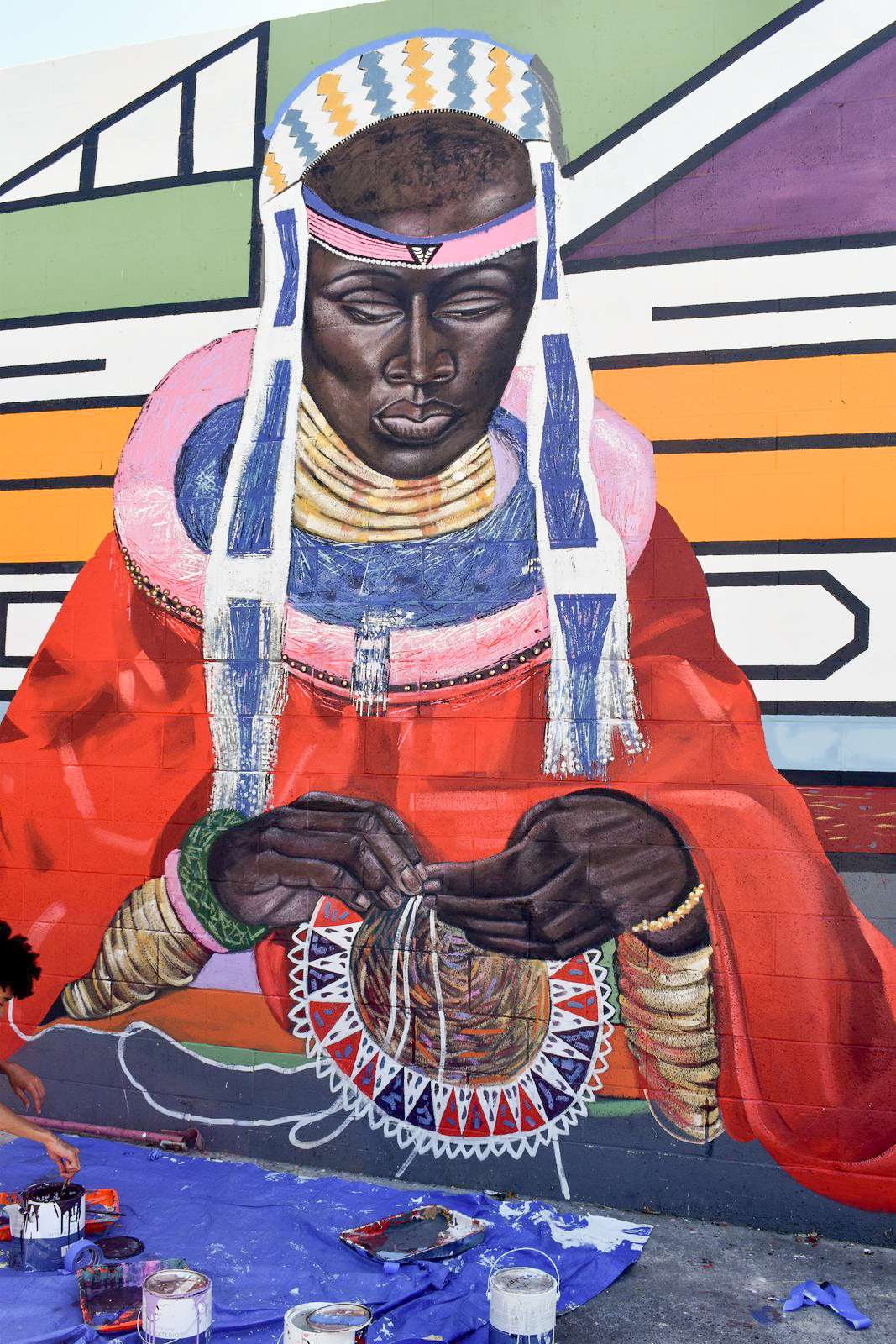
Then, in 2010, I was contracted to do a mural on the SMUD wall on 14th and Stockton Boulevard in Hollywood Park. They had us go to all the neighbors and give them a copy of the design; we also held community discussions. The murals are local landmarks, like the old bowling alley on Stockton Boulevard, Luigi’s Pizza, and the Oak Park Methodist Episcopal Church, the first church in Oak Park. The old State Fairgrounds used to be in that area, so all the landmarks, including the Golden Bear, were there. Of the ten faces in the mural, we had two Black faces, one Asian, one Mexican, and the rest were White.
I was excited about painting chocolate skin and started painting the Black faces first. And, whoa, the White people in that community shut the project down. We had six artists and about 20 youths out there, and people were driving by and calling us niggers. “Who authorized you niggers to be out here?” And the children were crying; the parents had to come to pick them up. Making art is a peaceful act, and we were just out painting. That was on a Friday, and so many people from that community complained that the following Monday, the city shut the project down, and there was a town hall meeting that the attorneys for the arts led.
The California Lawyers for the Arts said the community didn’t want faces anymore; they wanted landscapes. It was evident to the Black people in the room that they’d rather have landscapes or images of animals than have a Black face. Folks claimed that they were not racist, but the tension in that room was unbearable. Ultimately, the project remained closed. They whitewashed what we had put up, and SMUD paid us our money; it was a $10,000 contract. Again, that was in 2010.
In 2020, Wide Open Walls asked me to paint a mural on a SMUD wall downtown on N Street. And I knew what I wanted to paint: “Having My Seat at the Table,” a portrait of a chocolate, melanated woman.
What a difference ten years made because we had hundreds of white people coming out telling us how much they loved the mural. After being afraid it would get vandalized and having mixed emotions, what a Relief. Instead of calling us niggers, they’re blowing their horns and saying, “This is beautiful”! And I was like, “Okay, what’s going on here?” When I drove away after the last brush stroke, I was crying, thanking God for letting me get through this process of finishing this mural with people in our community loving it.

After that, I started getting opportunities that I had never had before. For example, last year, I got a call to have a solo show with Yolo Arts at the 625 Gallery in Woodland, CA. I thought, okay, let me pinch myself; this has never happened. Thirty-something years of doors shut in my face and curators not wanting to see images that I was painting.
Suddenly, there’s some change that I’m seeing, but there’s still a whole bunch of change that needs to happen. But I’ll take the little change that’s happening, feeding my soul with positivity. I’ll take that tiny bit, even though I know so much more needs to happen.
Hearing about young Black men being murdered or beaten by the police drops my energy, and even though it’s not my child, it’s a part of me, too, because that could be my child. I don’t want anything to happen to my nephew, dad, brother, or son. But in the art world, I’ll take that little change I’ve been experiencing; it’s been wonderful.
Then, to paint these murals around the Museum, the city stepped up to help us get this contract with Caltrans. It’s uplifted the community’s spirit; we get tons of Black and Brown kids out there on any given day taking selfies.
The City
With that said, the City could do better by helping us secure more operational funding. It’s one thing to get funding to help beautify your community, but programs take people to facilitate, and we have rent and overhead to pay. The City offered the Resiliency Grant, which is $20,000. $20,000 goes quickly, representing one month of funding for the museum.
We need city officials to help us; we’re the only African-American museum here. We’ve participated in Sacramento’s annual city-wide fundraising event, the Big Day of Giving, since 2013, when it was just for art institutions, and we’re making little more than what we did back then. This year, I’ve requested that the Sacramento Regional Foundation create a campaign within the Big Day of Giving outreach to urge potential donors to diversify who they’re supporting and not just give to the same groups. Our work is valuable and worthy, too. This past year, they hired Marissa DeSalles to run the Cultivate Program, which was created to help Black and brown nonprofits strategize, but the outcome for the Museum was the same.
Again, it gets down to staffing. We followed the strategies of the Cultivate Program, which increased our number of donors, though they are all $10 and $25, which we truly appreciate. The larger organizations have the staff to develop relationships with the major donors, which works. We made $8,000. All the other cultural institutions made between $100,000 and $150,000. That’s such a vast disparity.
Imagine what we could do if we had $100,000 or $150,000. After 30 years of serving this community, we deserve that. I am figuring out what the city can do to work with the Regional Foundation to help with a campaign focused on the donors rather than concentrating on the nonprofits or what they could do better; we’re doing all that. We’ve created video content and reached out to communities; we’ve been doing that all along. The campaign should also focus on the donors who support the same groups yearly, but they’re not looking beyond that to learn about other groups doing good work. How can the city and the Regional Foundation help us showcase our work to potential donors?
There’s also a massive need for event space. We love having events in our communities and bringing out large crowds, but we often need to step outside our community and go downtown and pay a tremendous amount of money to rent event space. If you’re trying to get a thousand or more people, the city needs to help open some of these spaces in our communities and make them available.
Advice for the young artist
One of the main things is to avoid fooling yourself into believing you have arrived. Always be a student of the arts. No matter how much people say they love my art, some even call me Master Artist Shonna—I wouldn’t say I like that term. I’m not a master artist. I’m a student, and I’ll always be a student.
I will never arrive in anything that I do in this lifetime. This lifetime is a journey I’m traveling as a student, trying to learn as much as I can along the way, improve myself, and become a better human being, but I will never “arrive.” I can never master anything. Okay?
It’s for the higher power to allow me to continue my craft and try to be the best I can be. I’m always trying to learn. I’m always taking classes, watching YouTube videos, and studying books. And like I told you, before I leave this life’s journey, I want to be a sculptor who builds a large-scale piece. My goal is to create an eight- or nine-foot sculpture piece. That’s one of the things I want to do before I leave. And so, be a student. Continue to learn and practice. Just continue to create, create, create!
Minimize that ego. Be a student and continue to learn, and that’s what I practice. Try to learn something new in the art world every day and be a part of a collective initiative to have a voice for those who may not. Make sure you’re impacting children and youth. And remember older people.
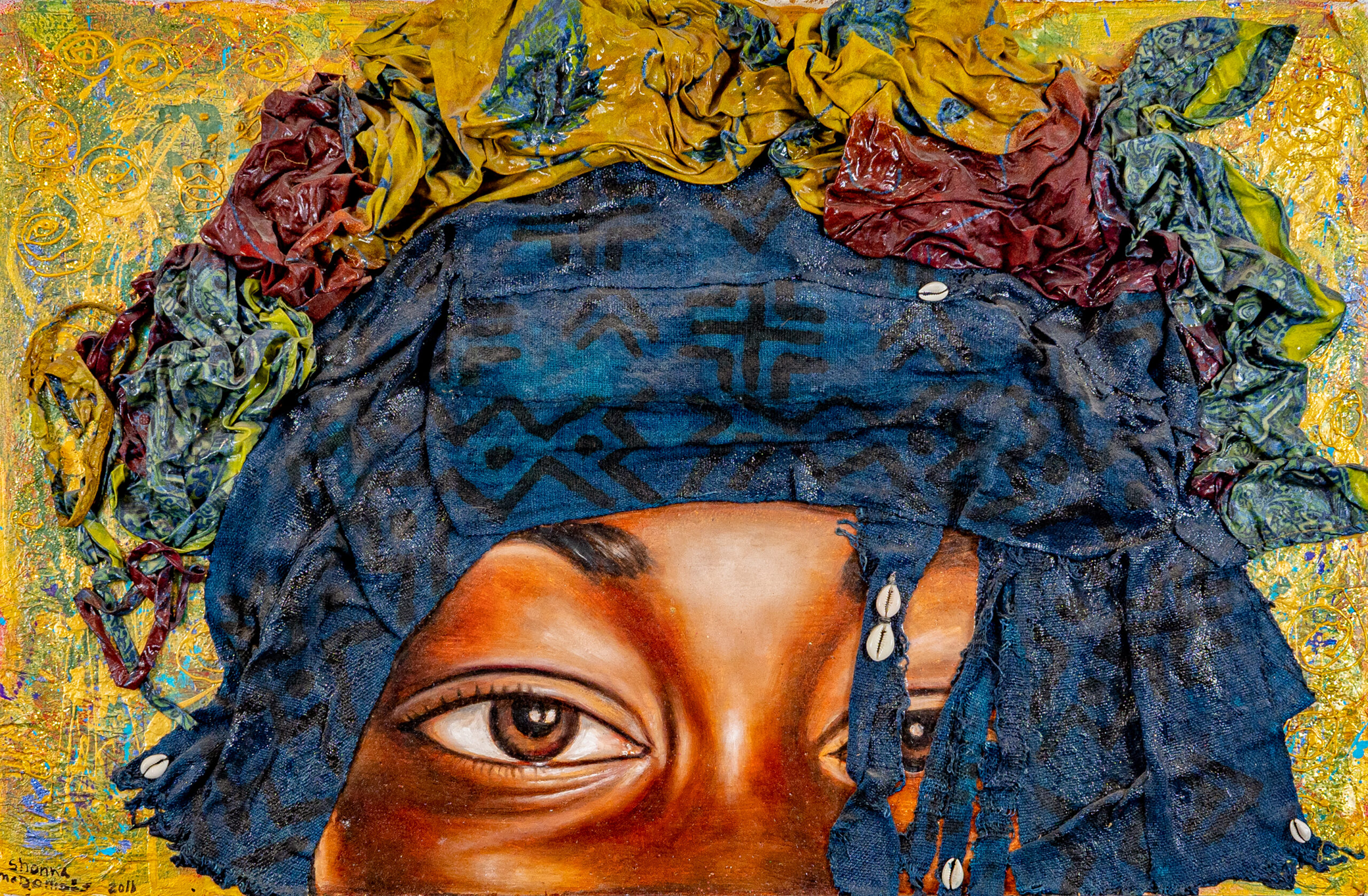
The Youth
Our docent program has inspired other museums. The Crocker brought the entire staff here to see how we operate our youth docent program. They generally have senior docents at the Crocker and other museums. Still, our program inspires other museums to bring in the youth to learn about the exhibitions and share our history.
I can tell you from first-hand experience that when I see young people come through the doors and see our youth sharing history, the exhibitions, and all of that, it’s like this fire comes into their eyes. It’s like, I want to do that. They’re inspired to want to work here. We have a waiting list of 50 young people who want to work as a docent, and some are motivated enough to say, “I’ll just come and volunteer.” Today, we have one young lady and four youths just volunteering.
They’re on the waitlist but want to be here. I tell them you can’t be here wasting time and hanging out with friends. You’ve got to be serious. You’ve got to learn. And they’re being serious about it. So, those are the two things; well, maybe we’ll put a third in there: we’re probably the only organization catering to seniors.
That makes me proud. That fulfills my heart and soul because seniors have a very special place in my heart. And today’s youth, like I said, should value our seniors more. I’m happy we created an annual Senior Day to celebrate local seniors. We have 150 to 200 seniors come out, and we pamper them.
We pamper them. They come and have a hot meal, get a pedicure, or have their nails done; the men can get a haircut. The women can get a free hairstyle. We play bingo, and we have $500 that we put on the table for them to win. They don’t have to pay to play bingo. Over the years, if we had funding, we also created an initiative to give them a $75 gift card. We have the youth in the community go shopping for them. They call them and say, “What do you want me to pick up with your $75?”
We trained them to do comparison shopping. Like, don’t get a $10 loaf of bread. We ask them to call them once a week and check on them, ask how they are doing, and then send them a love letter once a week. So, the senior gets a love letter, like a little card saying, we’re thinking about you, we love you, how are you, how was your day and an excellent quote in the card. That makes the seniors feel so, so good.
Those things make me proud.

